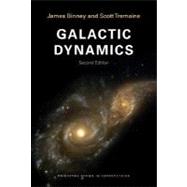
What is included with this book?
| Preface | p. xiii |
| Introduction | p. 1 |
| An overview of the observations | p. 5 |
| Collisionless systems and the relaxation time | p. 33 |
| The relaxation time | p. 34 |
| The cosmological context | p. 37 |
| Potential Theory | p. 55 |
| General results | p. 56 |
| The potential-energy tensor | p. 59 |
| Spherical systems | p. 60 |
| Potential-density pairs for attened systems | p. 72 |
| Multipole expansion | p. 78 |
| The potentials of spheroidal and ellipsoidal systems | p. 83 |
| The potentials of disks | p. 96 |
| The potential of our Galaxy | p. 110 |
| Potentials from functional expansions | p. 118 |
| Poisson solvers for N-body codes | p. 122 |
| The Orbits of Stars | p. 142 |
| Orbits in static spherical potentials | p. 143 |
| Orbits in axisymmetric potentials | p. 159 |
| Orbits in planar non-axisymmetric potentials | p. 171 |
| Numerical orbit integration | p. 196 |
| Angle-action variables | p. 211 |
| Slowly varying potentials | p. 237 |
| Perturbations and chaos | p. 243 |
| Orbits in elliptical galaxies | p. 262 |
| Equilibria of Collisionless Systems | p. 274 |
| The collisionless Boltzmann equation | p. 275 |
| Jeans theorems | p. 283 |
| DFs for spherical systems | p. 287 |
| DFs for axisymmetric density distributions | p. 312 |
| DFs for razor-thin disks | p. 329 |
| Using actions as arguments of the DF | p. 333 |
| Particle-based and orbit-based models | p. 338 |
| The Jeans and virial equations | p. 347 |
| Stellar kinematics as a mass detector | p. 365 |
| The choice of equilibrium | p. 376 |
| Stability of Collisionless Systems | p. 394 |
| Introduction | p. 394 |
| The response of homogeneous systems | p. 401 |
| General theory of the response of stellar systems | p. 417 |
| The energy principle and secular stability | p. 423 |
| The response of spherical systems | p. 432 |
| The stability of uniformly rotating systems | p. 439 |
| Disk Dynamics and Spiral Structure | p. 456 |
| Fundamentals of spiral structure | p. 458 |
| Wave mechanics of differentially rotating disks | p. 481 |
| Global stability of differentially rotating disks | p. 505 |
| Damping and excitation of spiral structure | p. 518 |
| Bars | p. 528 |
| Warping and buckling of disks | p. 539 |
| Kinetic Theory | p. 554 |
| Relaxation processes | p. 555 |
| General results | p. 559 |
| The thermodynamics of self-gravitating systems | p. 567 |
| The Fokker Planck approximation | p. 573 |
| The evolution of spherical stellar systems | p. 596 |
| Summary | p. 633 |
| Collisions and Encounters of Stellar Systems | p. 639 |
| Dynamical friction | p. 643 |
| High-speed encounters | p. 655 |
| Tides | p. 674 |
| Encounters in stellar disks | p. 685 |
| Mergers | p. 695 |
| Galaxy Formation | p. 716 |
| Linear structure formation | p. 717 |
| Nonlinear structure formation | p. 733 |
| N-body simulations of clustering | p. 751 |
| Star formation and feedback | p. 760 |
| Conclusions | p. 765 |
| Useful numbers | p. 770 |
| Mathematical background | p. 771 |
| Special functions | p. 785 |
| Mechanics | p. 792 |
| Delaunay variables for Kepler orbits | p. 805 |
| Fluid mechanics | p. 807 |
| Discrete Fourier transforms | p. 818 |
| The Antonov Lebovitz theorem | p. 822 |
| The Doremus Feix Baumann theorem | p. 823 |
| Angular-momentum transport in disks | p. 825 |
| Derivation of the reduction factor | p. 830 |
| The diffusion coefficients | p. 833 |
| The distribution of binary energies | p. 838 |
| References | p. 842 |
| Index | p. 857 |
| Table of Contents provided by Publisher. All Rights Reserved. |
The New copy of this book will include any supplemental materials advertised. Please check the title of the book to determine if it should include any access cards, study guides, lab manuals, CDs, etc.
The Used, Rental and eBook copies of this book are not guaranteed to include any supplemental materials. Typically, only the book itself is included. This is true even if the title states it includes any access cards, study guides, lab manuals, CDs, etc.